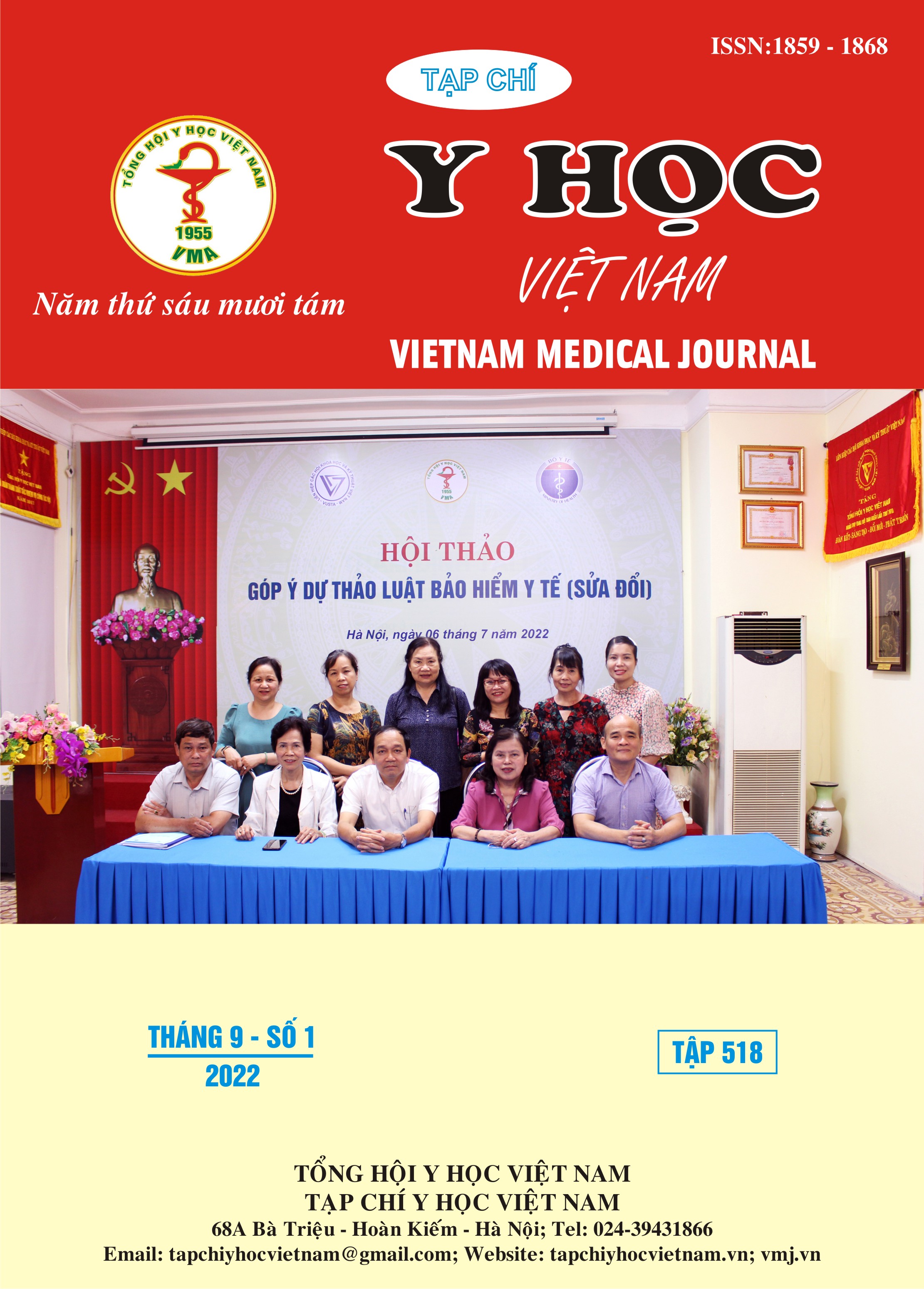CLINICAL CHARACTERISTICS OF TEMPOROMANDIBULAR JOINT DISORDER PATIENTS
Main Article Content
Abstract
Temporomandibular disorder (TMD) is a common and complicated disease that greatly affects quality of life. Clinical manifestations of TMD are diverse and create challenges in diagnosis and treatment. Determining the common as well as the prognostic indicating signs and symptoms in TMD is necessary and a priority. We conducted a study on 80 patients with TMD who were treated at O'care Dental Office from 2019 to 2021. The results show that the number of female patients is 3 times higher than that of male patients, and the group of patients under 30 years old is twice as high as the group above 30 years old with a mean age of 27.2 years. For the characteristics of functional symptoms, the rate of joint sounds, arthralgia and myalgia accounted for a rather high rate (86.3%, 56.3%, 43.8%), of which 48% of cases had severe pain (7- 9 points) and 8.8% unbearable pain (10 points) showed that pain was the strongest motivating factor for patients to come for treatment. The most painful muscle groups are the superior lateral pterygoid, medial pterygoid, temporal and masseter muscles with the rate from 71.3% to 81.3%. In the joints, pain was mainly shown in the TMJ ligament and capsule (53.8% and 50.0%). Up to 86.3% have joint sounds, indicating that there may be a close relationship between intra-articular disorders and TMD. Jaw movement disorders are mainly limited opening and deviated opening, although the rate is not high (46.3%) but these are important prognostic indicators in the diagnosis and treatment of patients with TMD.
Article Details
References
2. Phạm Như Hải (2006) Nghiên cứu dịch tể học loạn năng bộ máy nhai và đề xuất giải pháp can thiệp, Luận án Tiến sĩ Y học, Trường Đại học Y Hà Nội, 121.
3. Hoàng Tử Hùng, Đoàn Hồng Phượng (2006) "Tình trạng rối loạn thái dương hàm ở người lớn (18-54 tuổi) tại Thành phố Hồ Chí Minh". Tuyển tập công trình nghiên cứu khoa học Răng Hàm Mặt 2006, 37-46.
4. Trần Ngọc Quảng Phi (2018) Cắn khớp lâm sàng và rối loạn hệ thống nhai- Tập 1, Nhà Xuất Bản Y học Chi nhánh TPHCM,
5. Võ Đắc Tuyến, Hồ Thị Ngọc Linh (2007) "Rối loạn TDH ở một mẫu dân số tại TPHCM". Y học TPHCM, 11 (Phụ bản số 2), 122-127.
6. Alkhader M., Ohbayashi N., Tetsumura A., Nakamura S., Okochi K., Momin M. A., et al. (2010) "Diagnostic performance of magnetic resonance imaging for detecting osseous abnormalities of the temporomandibular joint and its correlation with cone beam computed tomography". Dentomaxillofac Radiol, 39 (5), 270-6.
7. De Boever Jan A, Nilner Maria, Orthlieb J-D, Steenks MH (2008) "Recommendations by the EACD for examination, diagnosis, and management of patients with temporomandibular disorders and orofacial pain by the general dental practitioner". Journal of Orofacial Pain, 22 (3)
8. LeResche L (1997) "Epidemiology of temporomandibular disorders: implications for the investigation of etiologic factors". Critical Reviews in Oral Biology & Medicine, 8 (3), 291-305.
9. Okeson JP (2020) Management of Temporomandibular Disorders and Occlusion, Mosby Elsevier, 8th Edition,


